State Library's ten most unusual items
By Tom Jordan, Queensland Memory | 20 June 2022
It’s always surprising digging through State Library's collections. Sometimes, however, the things you can discover are weirder and more wonderful than you could imagine. Deep within our repositories, We’ve found oddities including letters written on gum leaves, books made of fish, and a walking stick purportedly used by Ned Kelly.
We’ve compiled a list of some of the most unusual items we’ve encountered in our collections.
10. Proposed Pink Bikie Male Prison Uniforms ca 2014

30024 Proposed Pink Bikie Male Prison Uniforms ca 2014, John Oxley Library, State Library of Queensland
In 2013 the Newman Government passed the Vicious Lawless Association Disestablishment (VLAD) Act ‘to come down harshly on outlaw motorcycle gangs and their members’. Police were concerned that some of these gangs were using tattoo parlours to launder illegal income, especially from drugs. Pink suits were to be worn by bikies convicted under the VLAD legislation. There were no successful prosecutions under these laws, amended by the Palaszczuk Government in 2016, extending their remit from outlaw motor bike gangs to child exploitation and drug trafficking. The new act makes it illegal to consort with two or more convicted offenders, once cautioned by police.
9. Ashtray made from WW2 aircraft engine piston
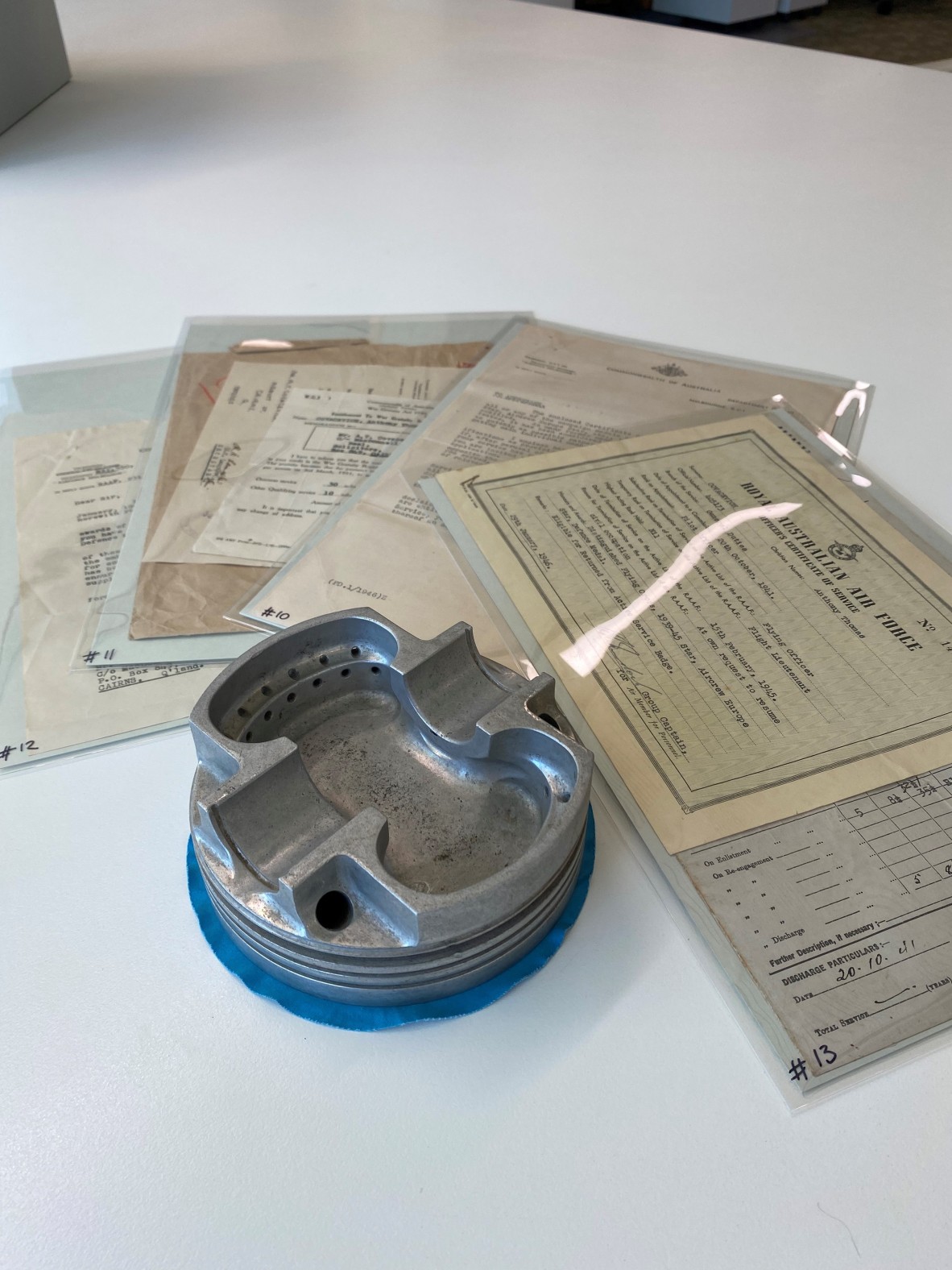
An ashtray made from a World War II aircraft piston. 28041 Anthony Thomas Covacevich Papers and Realia 1941-1978.
This lightly-used lump of metal comes to us from an interesting collection including papers and realia associated with the wartime career and service of prominent Queensland solicitor Sir Anthony Thomas Covacevich. The collection includes Sir Anthony's RAAF Observer's Air Gunner's and W/T Operator's Flying Log Book, 1941-43, a souvenir tea towel depicting Bomber Command in the Second World War and a framed print from a painting by Francis Owen Salisbury entitled "The Briefing", among many other things.
The ashtray stands out as an oddity in this collection. It is unknown from what aircraft or engine it's from, which could be a question for a WW2 aircraft enthusiast. Apart from the residue cigarette ash left in the tray, the piston presents quite clean, and one can imagine this heavy receptacle sitting on Sir Covacevich's coffee table for many years after the war.
8. Piece of Wood From a Tree Felled by Mr. W. E. Gladstone 1858-1891
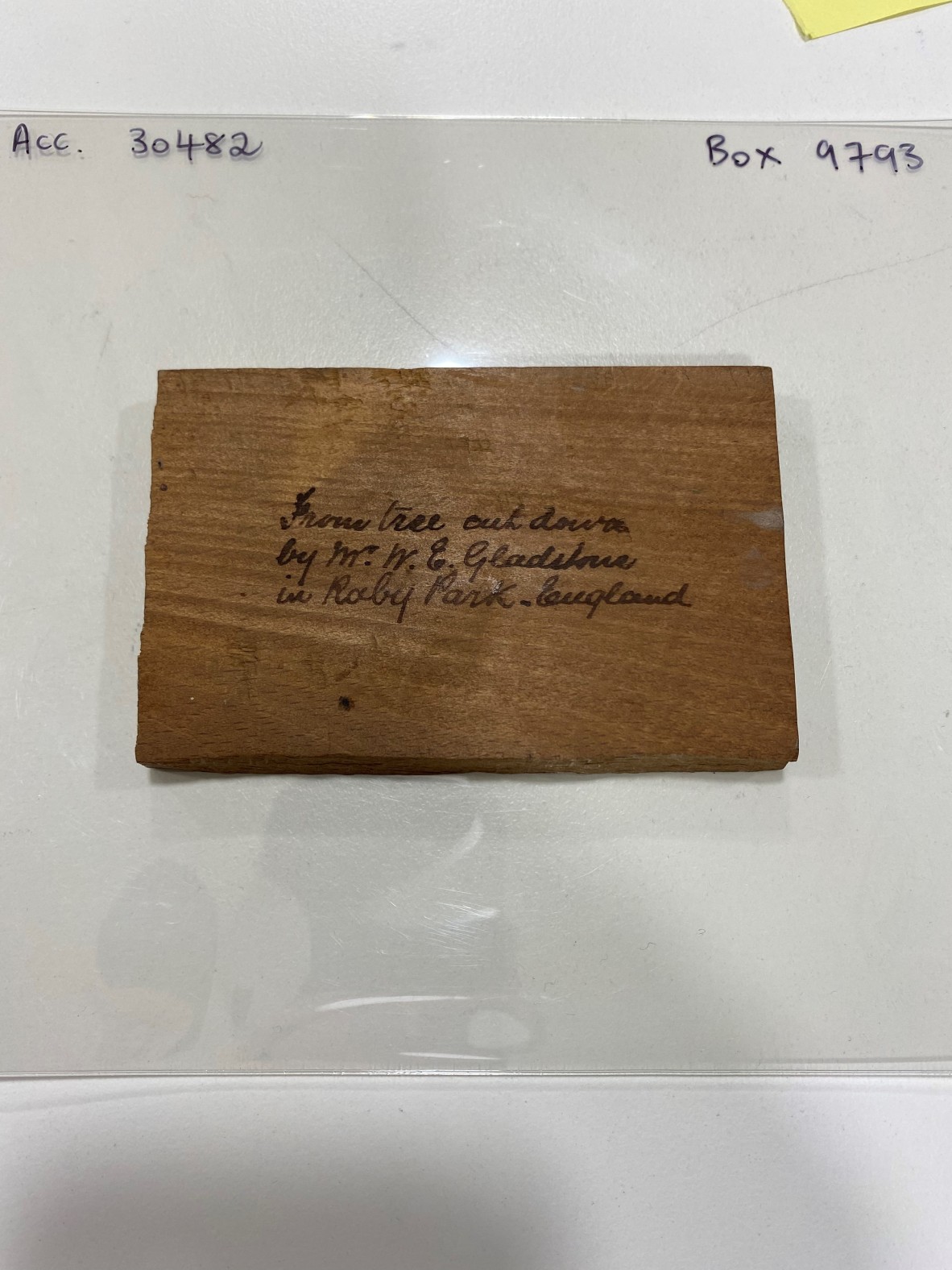
30482 Piece of Wood From a Tree Felled by Mr. W. E. Gladstone 1858-1891, John Oxley Library, State Library of Queensland.
This particular collection item gives rise to two main questions:
- Who is Mr. W. E. Gladstone?
- Why does State Library have a block of wood from a tree cut down in England?
Both of these are suitably valid, with one being significantly easier to answer than the other.
William Ewart Gladstone was a British statesman and liberal politician who served as Prime Minister of the United Kingdom during four separate terms between 1868 and 1894, the only person to do so. He is the oldest person to have served as Prime Minister, winning his last term at the age of 82. Gladstone is the namesake of the city of Gladstone in Queensland, and a 19th century marble statue of him stands in the city's museum. He also had a passion for tree felling. He became notorious for his love for chopping down oaks, elms and beech trees, with a political opponent observing at the time: "The forest laments in order that Gladstone may perspire." As destructive as this hobby was, Gladstone also had a practice of replacing the trees by planting new saplings.
So, why do we have this piece of wood felled by Gladstone in Raby park, England? No one is quite sure. We do have several theories.
Mr. Gladstone's most obvious connection to Queensland is the city for which he is the namesake. Unfortunately, there is no record of Mr. Gladstone ever setting foot in Queensland, let alone traversing Queensland's picturesque central coastline. The first Premier of Queensland, Sir Robert Herbert, had previously been his private secretary - however, there is as yet no specific evidence to connect Herbert to the piece of wood.
At some point there may have been some significance to this piece of wood and the state of Queensland. Through the years this provenance has been lost to us, however, and all that we are left with are questions... And a block of wood.
7. Ned Kelly Walking Stick
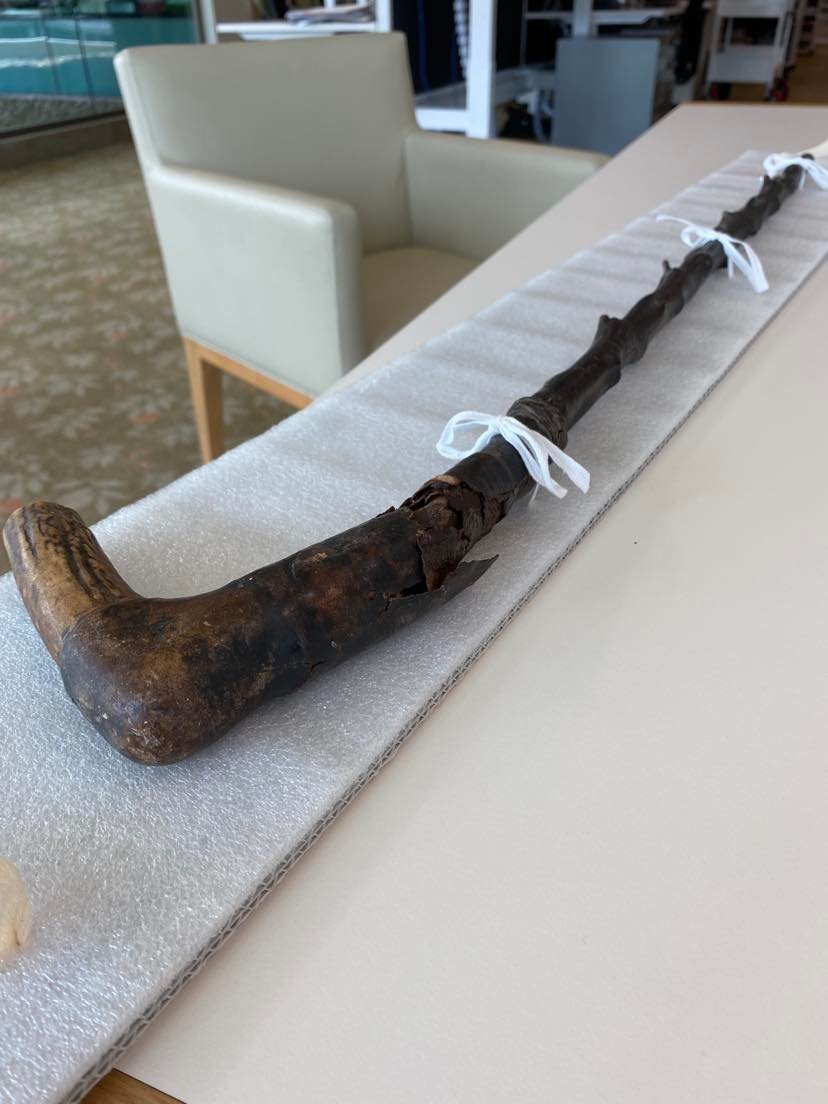
TR 1795 Ned Kelly Walking Stick, John Oxley Library, State Library of Queensland
This rather old but fashionable walking stick allegedly belonging to Australia's most infamous bush ranger is certainly a peculiar item to end up in State Library's collection, a good 1700 kilometers away from Kelly's hometown of Avenel in Victoria. While Ned Kelly's iconic iron armor housed in the State Library of Victoria is impressive, our Ned Kelly stick exists in infamy because of its extremely vague provenance. The collection record on Onesearch reads:
The walking stick was accompanied by a typed note, signed and dated by the donor, setting out the purported provenance of the walking stick. According to this note, the donor's grandfather, Doctor Joseph Goodall, a former Government Medical Officer in Queensland, was given this stick in 1882 by the Governor of Queensland. When presented with the stick he was told that the stick had belonged to Ned Kelly. Kelly was shot in his legs when captured and would have used the stick during his imprisonment.
One man telling another man that the ordinary shillelagh he is now giving him once was used by Ned Kelly doesn't necessarily equate to the truth of its origins. Even by 1882, two years after Kelly's execution, his legendary status as an icon of Australian folklore had already been cemented in the national identity. The first ballads about Kelly were published in 1879 and a petition for clemency against his execution with 32,000 signatures was presented to the Victorian governor before the bush ranger was hanged. After his death, objects and paraphernalia purportedly belonging to Kelly would wind up in museums, flea markets and private collections across the country. Even in 1933, an old bushman entered the offices of the Truth, a Brisbane newspaper, and claimed to be none other than Dan Kelly, brother of Ned Kelly.
While we may never find out whether this stick did indeed belong to Ned Kelly, it does make for a fantastic story.
6. Fuselage fragment from the Red Baron's plane, 1918.
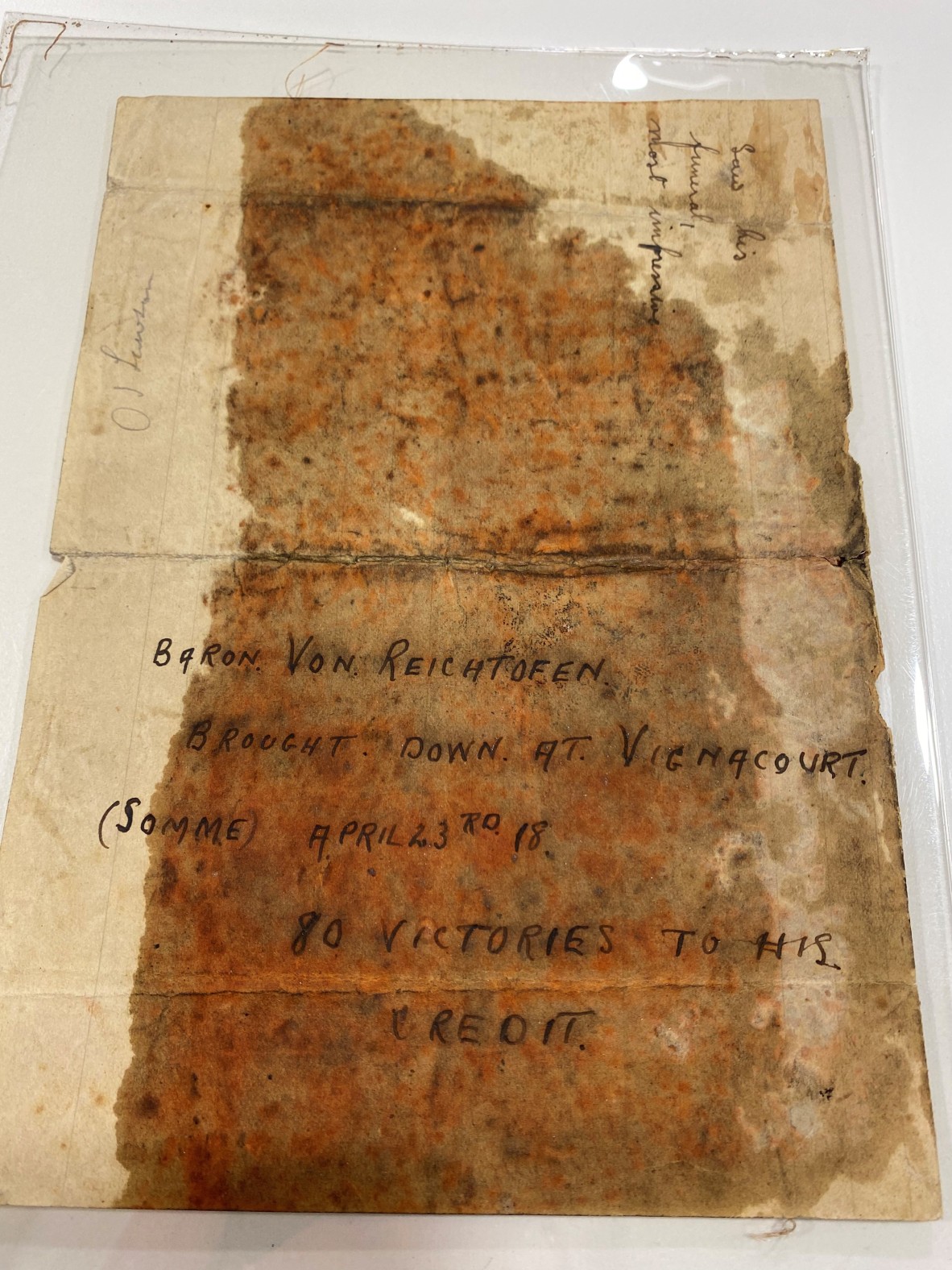
OM79-17/44 Manfred Albrecht Freiherr von Richthofen Fuselage Fragment ca. 1918. John Oxley Library, State Library of Queensland
Many would be surprised to find out that State Library houses this piece of wartime history. When we unpack a little of the history around it, it makes more sense that this waxy piece of canvas is here in Queensland 104 years later.
Even today, The Red Baron is well-known internationally. Considered the "ace of all aces" in World War One, The Freiherr ("Free Lord" in German, usually translated to "Baron" in English) Manfred von Richthofen was a fighter pilot with the German Air force from 1915 until he was shot down over the Somme in 1918. His nickname, The Red Baron, was derived from the red he would use to paint all his aircraft, unusual and striking compared to other fighter planes in service with the German Air Force.
There is a debate over who fired the shot that killed Richthofen.
Contrary to the song performed by The Royal Guardsmen, it was not Snoopy. On April 23rd, 1918, Richthofen was engaged in a dogfight with a Canadian pilot over an area of the Somme that was at the time controlled by Allied - mostly Australian - Troops. Suddenly, The Baron's plane turned sharply to the left and crashed into a hillside. Richthofen had been shot through the chest by a .303 calibre bullet. Roy Brown, the Canadian pilot, was initially credited with the shot. However, later evidence revealed that the shot came from below the aircraft. A blog on Libraries ACT suggests that it was Machine Gunner Cedric Popkin with the First Australian Imperial Force. Because of his notoriety for at least 80 victories to his name, the Baron's crash site was quickly inundated with troops in the area wanting a souvenir from the defeat. While we will never know who collected this particular souvenir, there is a chance that this piece of fuselage was collected by Cedric Popkin. Popkin lived in Palmwoods on the Sunshine Coast before he enlisted, and most likely returned to South East Queensland after returning from the war in 1919.
Once the allies had dismantled his aircraft, the Baron's remains were buried in a village near Amiens. Richthofen was well-respected by his enemies, receiving a full military funeral. Allied squadrons stationed nearby presented memorial wreaths, one of which was inscribed with the words, "To Our Gallant and Worthy Foe".
Many may also be surprised to learn that this piece of fuselage does not contain any metal at all. During the first world war, with aviation in its infancy, most aircraft were built with a lightweight wooden frame covered in a waxed canvas to make it waterproof. This piece still smells strongly like that wax, and while the red paint has dulled over the years, you can still imagine how striking the Red Baron would have looked streaming through the air.
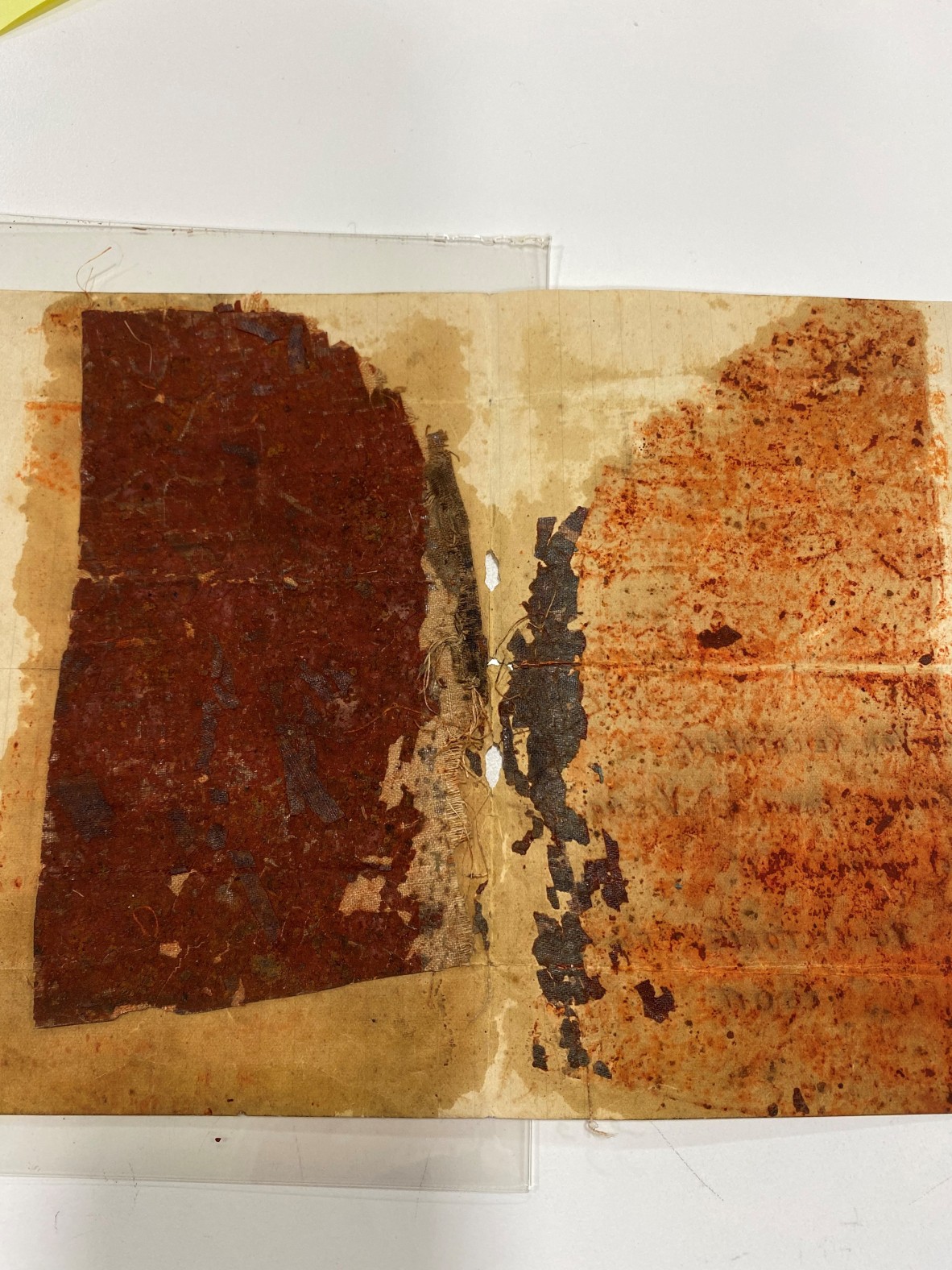
The piece of canvas fuselage from the red baron's aircraft. OM79-17/44 Manfred Albrecht Freiherr von Richthofen Fuselage Fragment ca. 1918. John oxley Library, State Library of Queensland
5. Queen Victoria's stockings
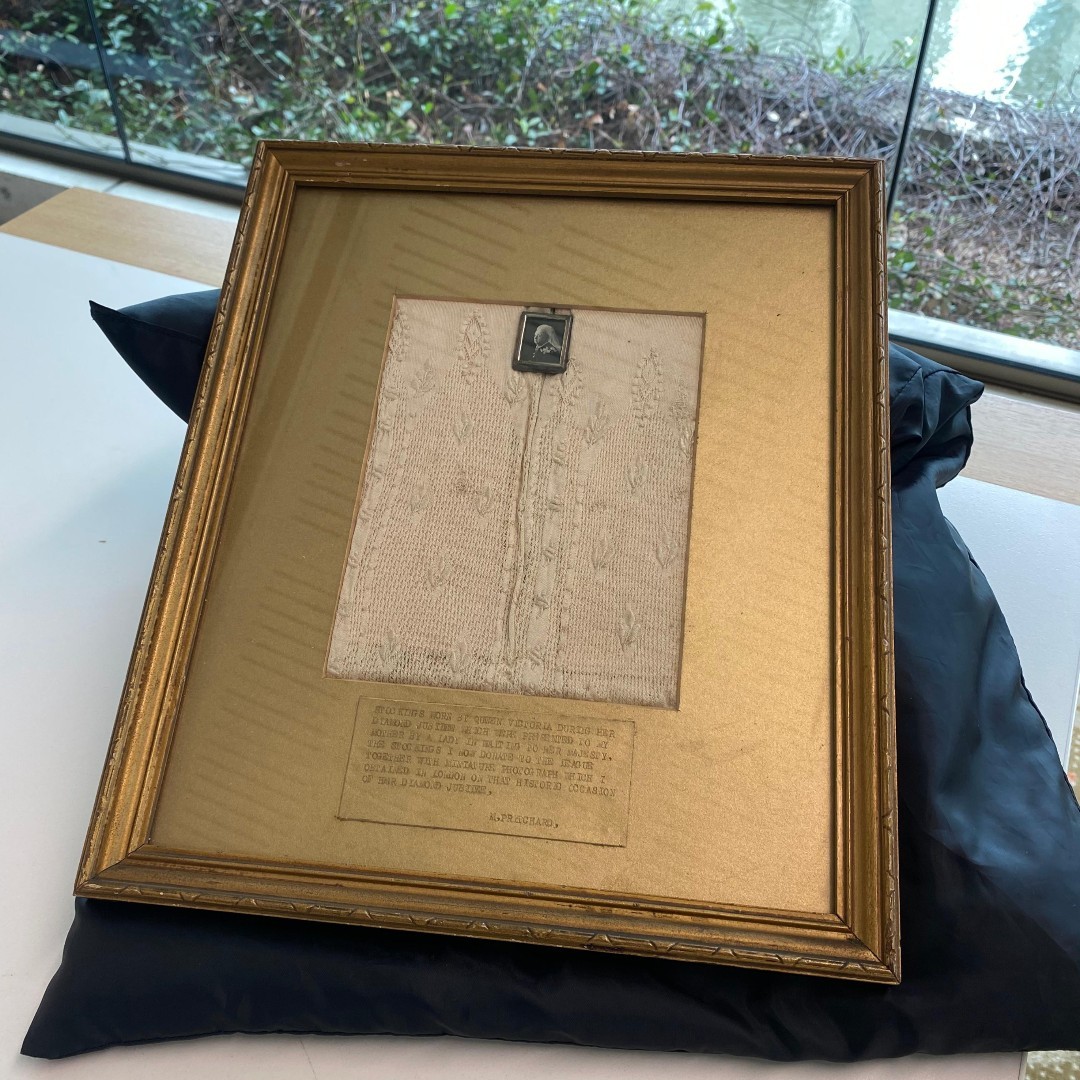
Our next strange collection item is truly of royal stock.
It's Queen Victoria's stockings, of course! The stockings, framed and mounted, are the very same she wore for her 1897 diamond jubilee, the first diamond jubilee ever celebrated by the British Empire.
Why do we have these surprising and somewhat bizarre pieces of undergarment? The stockings came to State Library in 2007 by way of the Victoria League for Commonwealth Friendship in Queensland Records (7378). They were presented to the league in 1948 by a Miss Pritchard, who added a small inscription below the stockings:
"Stockings worn by Queen Victoria during her Diamond Jubilee which were presented to my mother by a lady in waiting to Her Majesty. The stockings I now donate to the League together with miniature photograph which I obtained in London on that historic occasion of her Diamond Jubilee. M. Pritchard."
4. Convict nail from 1829
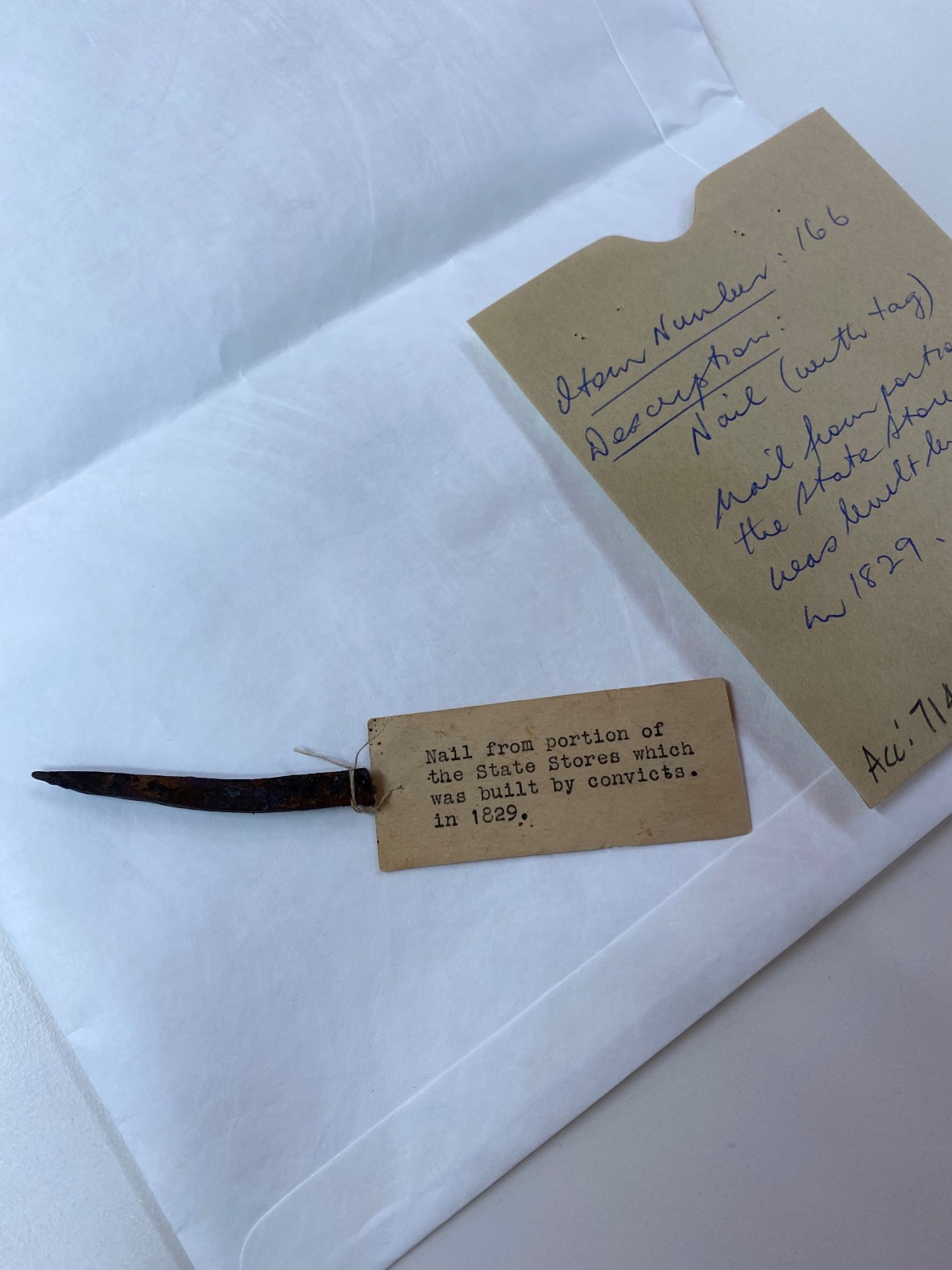
7141 State Stores Nail 1829, 7141, State Stores Nail, John Oxley Library, State Library of Queensland, Australia.
This nail used in the building of the Commissariat Store, one of only two surviving buildings from the convict period of the Brisbane penal colony, has somehow found itself in State Library's collection almost 200 years later. While it is only a rusty and wonky piece of metal, this strange item is an interesting piece of colonial Queensland History.
3. World War Two envelope fashioned from aluminium fuselage of Japanese fighter plane
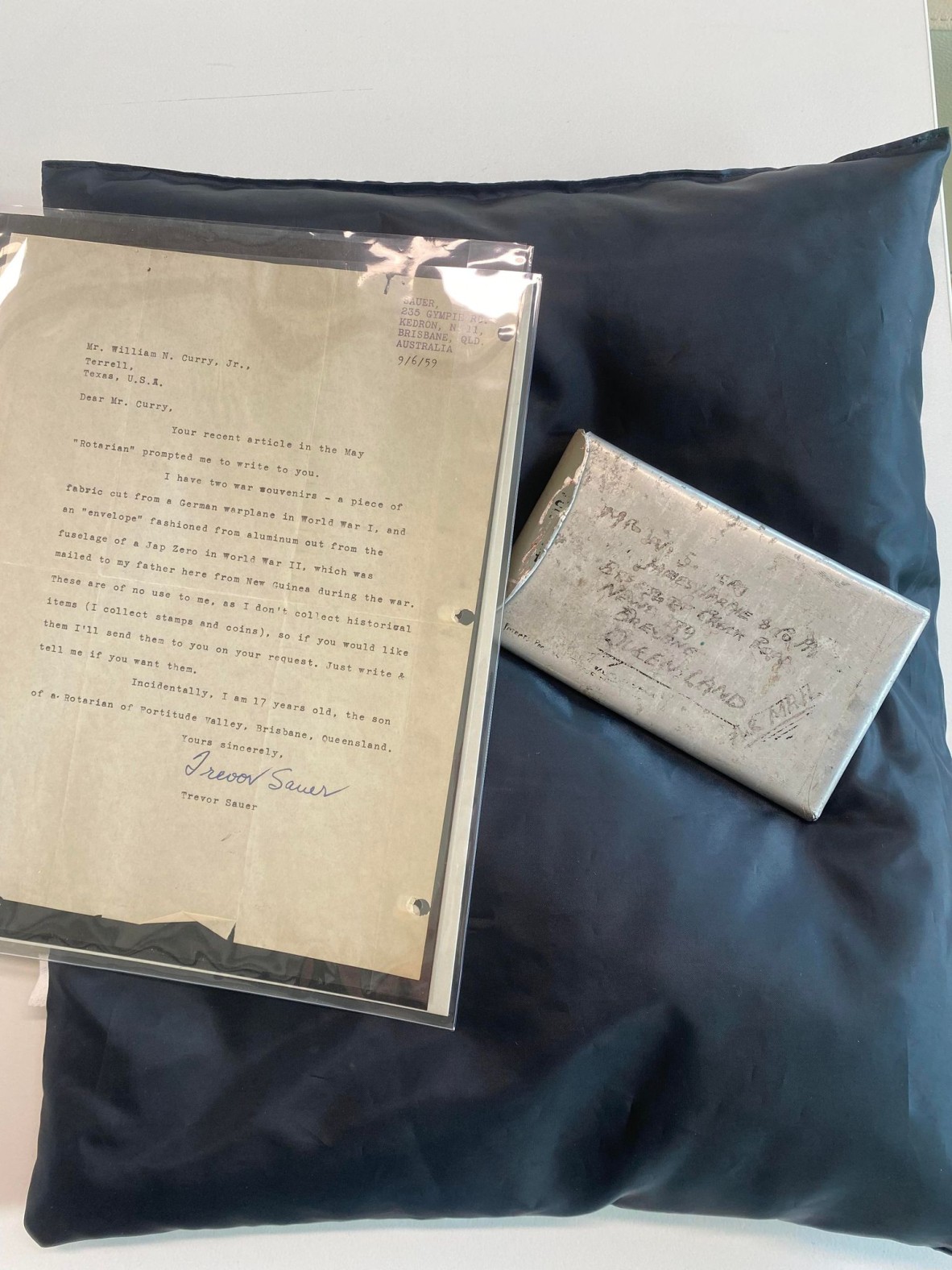
31129 World War Two envelope fashioned from aluminium fuselage of Japanese fighter plane 1939-1945 - John Oxley Library, State Library of Queensland
State Library seems to be filled with items made from recycled aircraft pieces.
This envelope was hand-made in New Guinea from aluminium cut from the fuselage of a Japanese Zero fighter plane.
The envelope was sent through the mail during World War Two address to Mr W. Sauer of James Hardie & company Newstead, Brisbane. Perhaps ironically, the envelope was marked "Air Mail".
On the reverse it states "Aluminium by courtesy of Tojo."
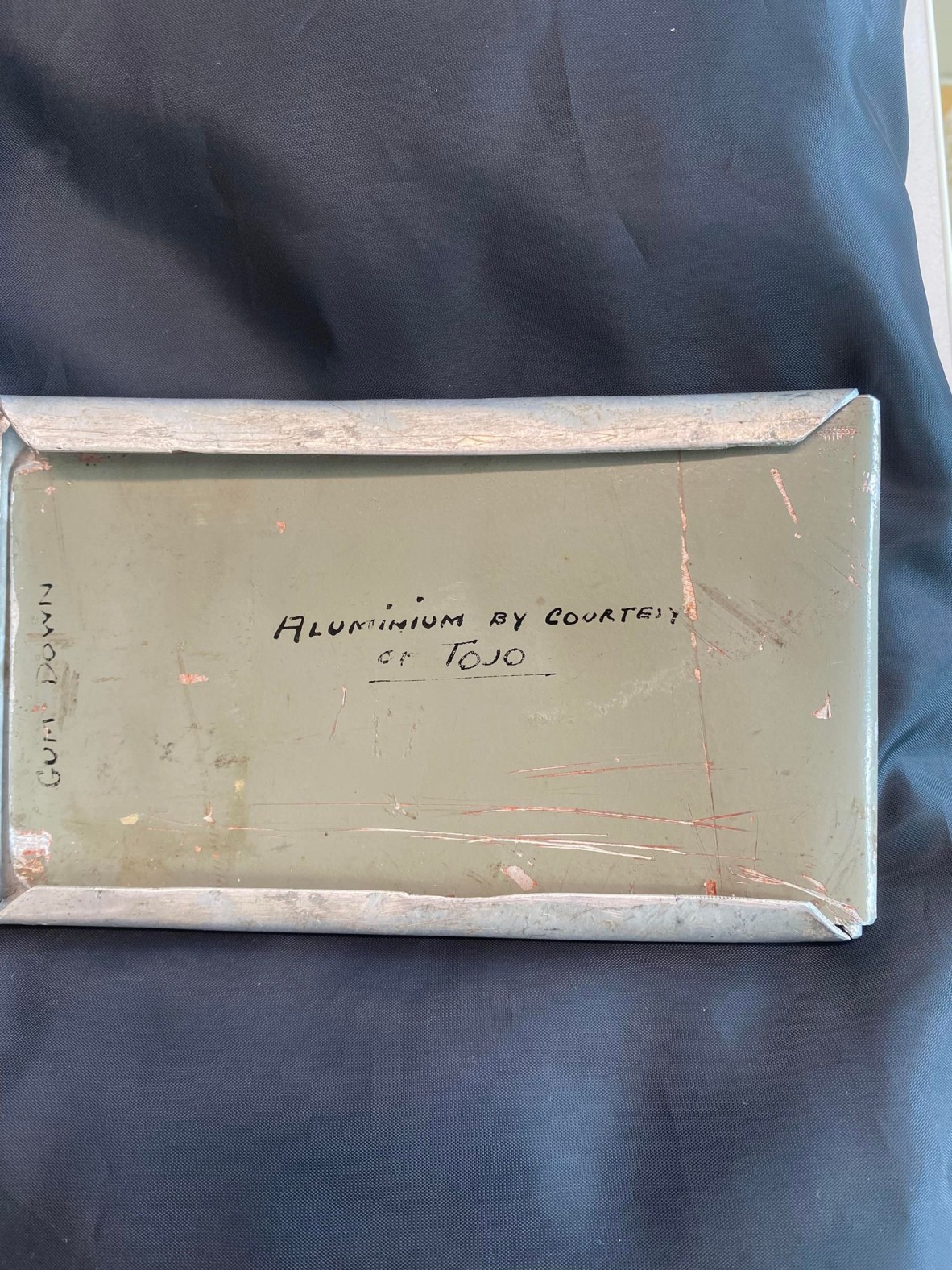
"Aluminium Coutesy of Tojo", 31129 World War Two envelope fashioned from aluminium fuselage of Japanese fighter plane 1939-1945 -
2. Gum leaf Letter
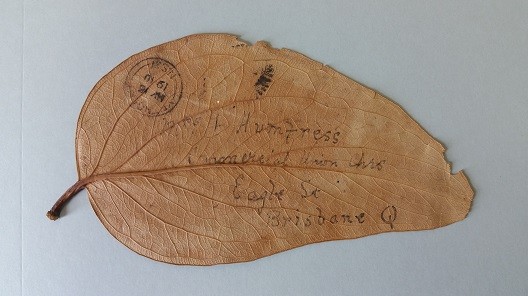
The 'gum leaf letter', 1910. 6190 General Post Office Collection. John Oxley Library, State Library of Queensland
In 1910, a newly married couple honeymooning in Yetholme, New South Wales, took it upon themselves to mail a gum leaf up to Brisbane to a Mrs F. Humfress at the Commercial Union Chambers, Eagle Street. The large gum leaf was written on directly, wasn’t placed in an envelope, and was even postmarked, before making the journey via post to Brisbane in one piece. One hundred and seven years later, although quite fragile and a little faded, the gum leaf is still fully intact and finds itself among the collections of the State Library of Queensland.
Somehow this novel postcard has lasted 112 years. You can even still read the message written on the back. It reads:
This is a real Eucalyptus leaf from Yetholme! We're here for 2 weeks. The air is lovely + the nights & mornings so cold.
With love to you
From Em & Harry
The gum leaf letter has had an interesting and eventful life since 1910. Read our blog on its journey through time here.
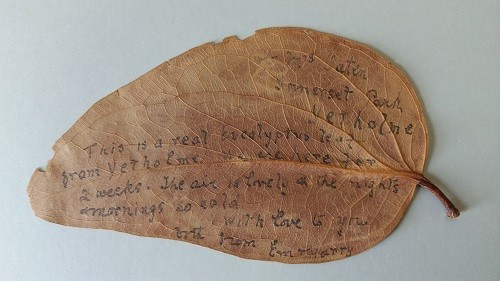
The 'gum leaf letter', 1910. 6190 General Post Office Collection. John Oxley Library, State Library of Queensland
1. Fish Book: Not Breathe a Word
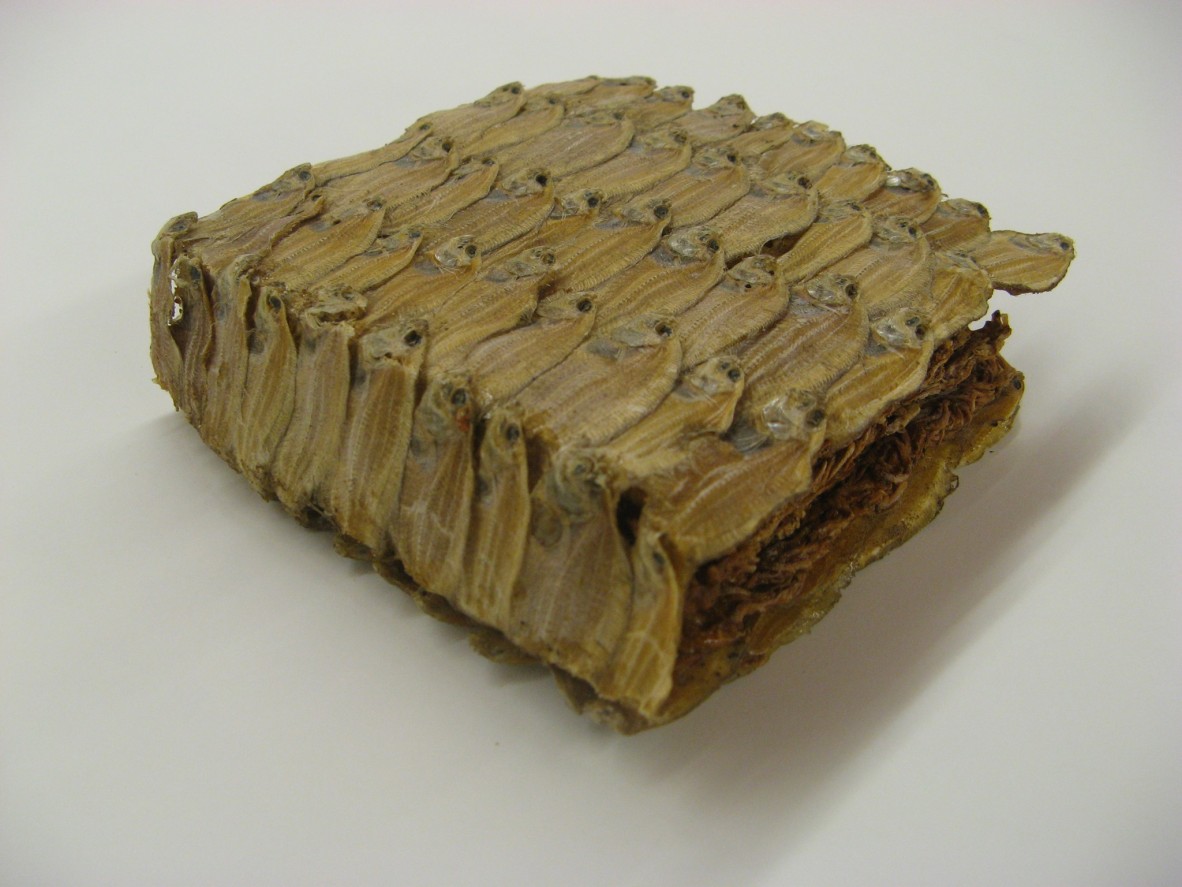
Fish book : Not breathe a word / Matt Dabrowski
Here's a question: what book has no words in it but is still breaming with tails?
It's Fish Book, a.k.a. 'not breathe a word', a 1996 work by Queensland artist Matt Dabrowski. Perhaps the strangest item in State Library's collection, this artist book is made entirely of dried fish, with the covers and 'endpapers' using 6cm long fish and the pages made with 2 cm long fish, tied together with three stiches of hemp cord.
The Artist statement reads: "Knowledge is held as continuous flowing experience in the framework of the living body. Fish book is made from the smallest fish in the world, caught and eaten by humans at Lake Bicol, Philippines. It is a book of dead fish.. an inscrutable archive of experience, no words - no "golden cows"
To stop further any further decay or decomposition of Dabrowski's work, Fish Book lives in the rare and restricted section of State Library's repository encased in a glass box. It is available to view by appointment.
Dabrowski's piece isn't the only weird and wonderful artist book we house in our collection. State Library's Artists' Books Collection consists of over 40 artists' books, ranging from a Tennis Ball book, a Ham and Lettuce Sandwich book, a toilet paper book, and a book made from a large, book-like piece of schist rock.
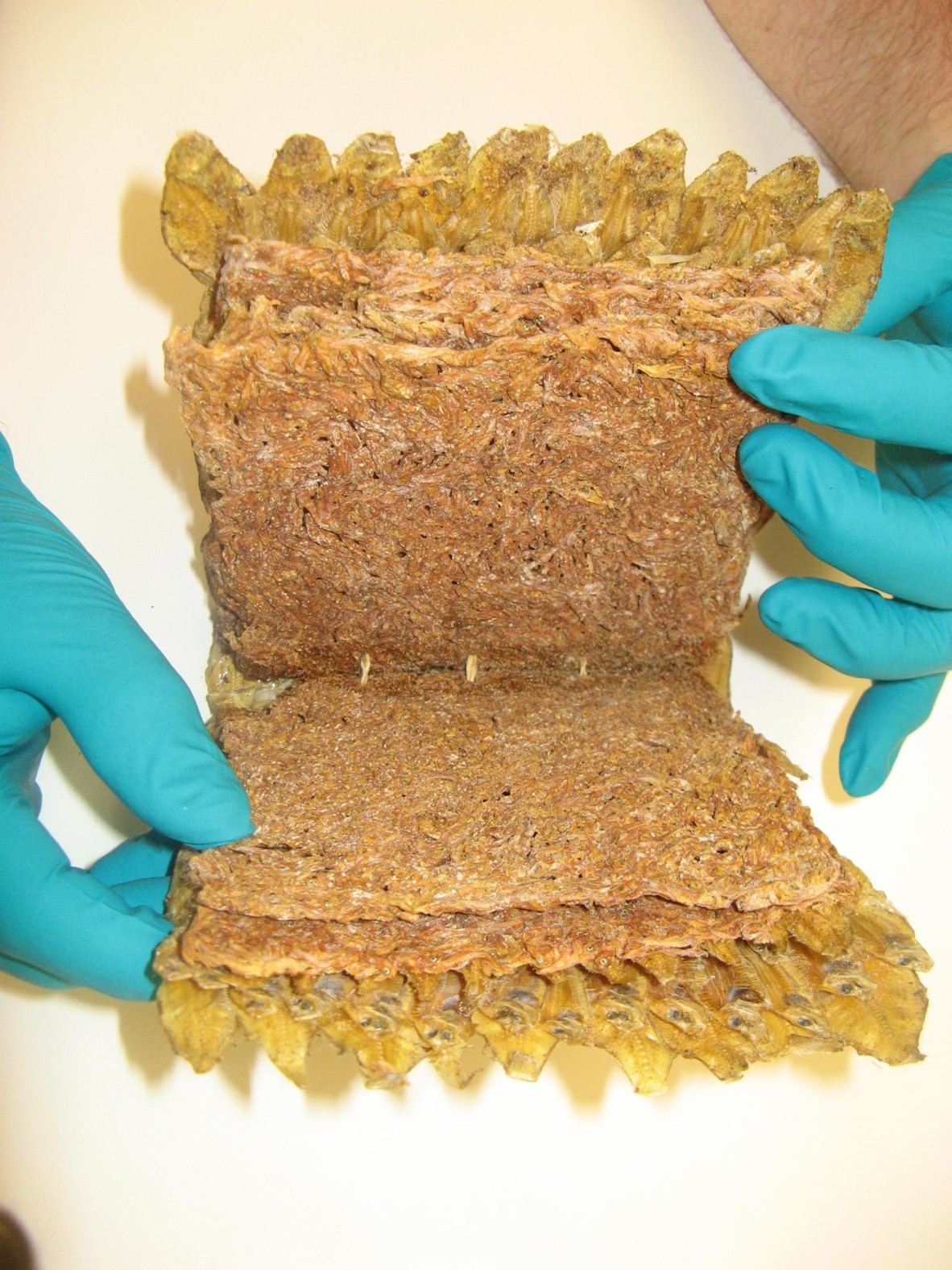
Fish book : not breathe a word / Matt Dabrowski. Author/Creator Matt Dabrowski 1966-
Comments
Your email address will not be published.
We welcome relevant, respectful comments.